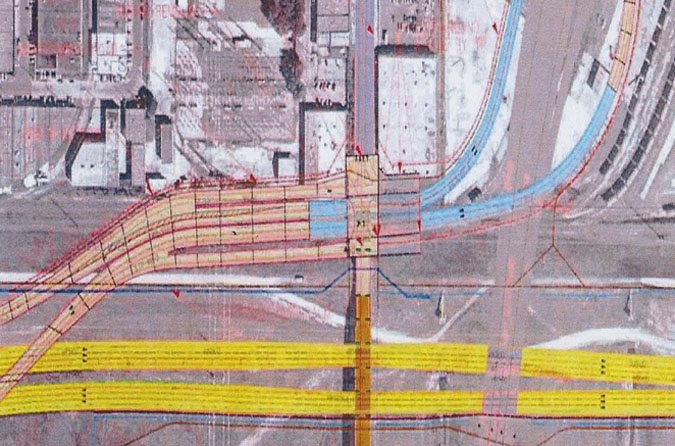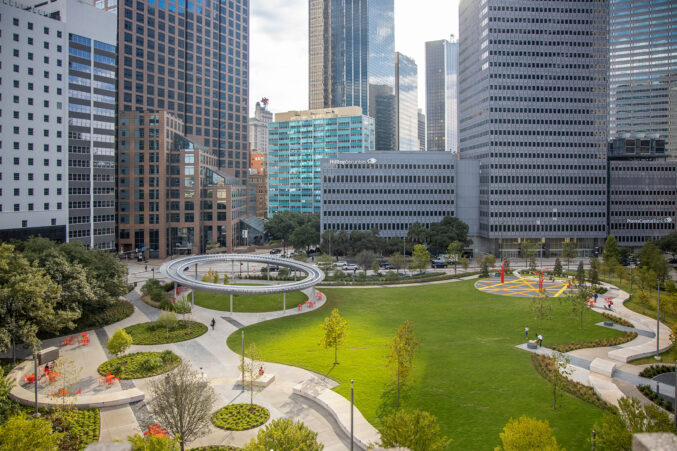
Goodness, a bunch of dust has been kicked-up by a little bit of flooding. The past week’s rains have come just at the right time to spark a whole lot of silly talk about flooding and toll roads and Trinity River Project plans. Opponents of the road are circulating memes that use the floods as an excuse to dance on the road’s supposed watery grave — look, the floodway floods! Over at the Dallas Morning News, a couple of editorial writers try to throw water on the fires of panic and hyperbole. A couple of days ago, Rodger Jones made the somewhat obvious point that yes, we can build a road in a flood plain and make sure it doesn’t flood. Today, Rudy Bush chimes in, reiterating his support of the Beasley Plan and attempting to calm everyone down by saying that a road that occasionally floods isn’t the end of the world, let alone the end of plans for a road in the Trinity River watershed.
However, as I wrote earlier this week, I don’t think anyone believes that we can’t build a road that doesn’t flood. Surely the world has seen greater engineering marvels. The question is whether or not this particular road plan is a stupid idea.
Let’s leave that conversation for another day. Here’s the point I want to make: I’m a bit concerned by both Jones and Bush’s eagerness to call Alternative 3C – the engineering plans for a massive highway with high-five style exit ramps flying every which way — over and done.
Jones writes:
Yes, 3C remains an active application, but does anyone argue that the city, in fact, intends to pursue it?
And then Bush echoes this presumptive logic:
In my mind, we already have scrapped 3C. I haven’t heard a person around the council horseshoe, save Vonciel Hill, embrace the full build-out of that road in months.
Bush and Jones are right about this: no one has gone on record in support of Alternative 3C. In fact, that was precisely the point of the motion made by council member Philip Kingston at that heated council meeting back in April when he moved for the city council to officially affirm Alternative 3C. At the time, Kingston’s tactic was derided by the DMN’s editorial board as cynical, counter-productive, and – gasp! – not nice. But Bush and Jones can thank Kingston for their ability to state confidently that Alternative 3C is no longer a “civic goal.”
But if the last decade of this project has taught us anything, it is that we need to be really careful about letting our guard down when people start saying they want the stuff for the Trinity River that is depicted in the pretty pictures. Haven’t we been here before? Remember how everyone said they supported the Balanced Vision Plan, and how in the months leading up to the announcement of the Beasley Plan, there were politicians still claiming that Alternative 3C fit snuggling into the scope and spirit of the Balanced Vision Plan? And yet it was that blind confidence that our “civic goal” was to pursue the Balanced Vision Plan that allowed the engineers, number crunchers, and other invested parties to slowly allow the BVP to evolve into Alternative 3C.
What we need to take away from the local history of the last decade is that when it comes to the Trinity the devil is in the details. The fact is the only project that has received federal approval is Alternative 3C. The council has not voted on the Beasley Plan, and no one has yet done the work to reconcile what aspects of the Beasley Plan are possible within the framework of the plans that were approached by the Army Corps of Engineers. Do I think everyone on the council would like to see the Beasley Plan happen? Sure, probably so. But that hardly matters. Until the Beasley Plan is translated into engineering schematics, until those schematics get the thumbs up from federal authorities, and until there is a concrete funding strategy that is signed off on all the invested parties — the city, the NCTCOG, the NTTA, and whoever else may get involved — then we can’t really say for sure what anyone plans to pursue in the Trinity River floodplain.
Another thing to take away from the last decade is that our local reporters and opinionators largely failed to hold politicians and staff accountable to the details of the Balanced Vision Plan. Let’s not let that happen again.





